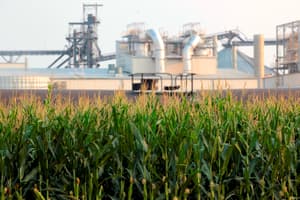New wind farms in the United States are increasingly installing larger, more efficient wind turbines that can generate twice as much power as older generations of turbines, according to the American Wind Energy Association (AWEA).
The association said that while most wind turbines currently in operation have a generating capacity of 2 to 3 megawatts, new turbines are being erected that can each produce from 3.5 to 4.5 megawatts of electricity. In the second quarter of this year, 22 wind-energy projects, with a combined capacity of 3,907 megawatts, purchased turbines with a generating capacity of 3.5 megawatts or higher, a 35 percent increase over the first three months of 2019, the AWEA said.
John Hensley, vice-president of research and analytics at the AWEA, said the growing use of larger turbines will help the industry weather the phase-out of federal wind energy tax credits at the end of the year. “We are confident we will remain one of the most competitive forms of energy,” said Hensley.
Using larger turbines means that fewer towers are needed to produce the same amount of electricity, which decreases the cost and size of projects, Scientific American noted. The smaller footprints will enable wind projects to be sited in more densely populated regions of the country, such as the mid-Atlantic region and the West Coast.


